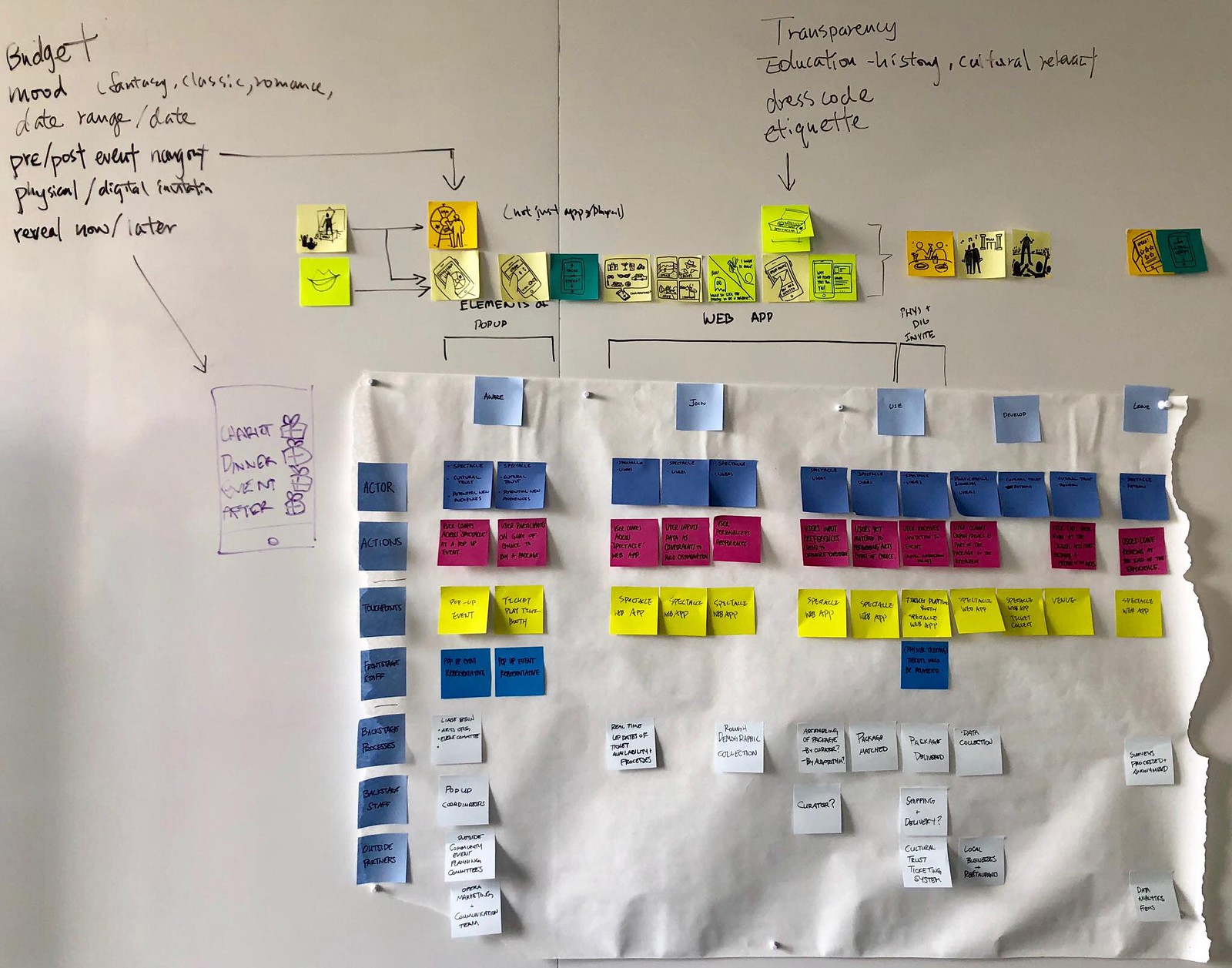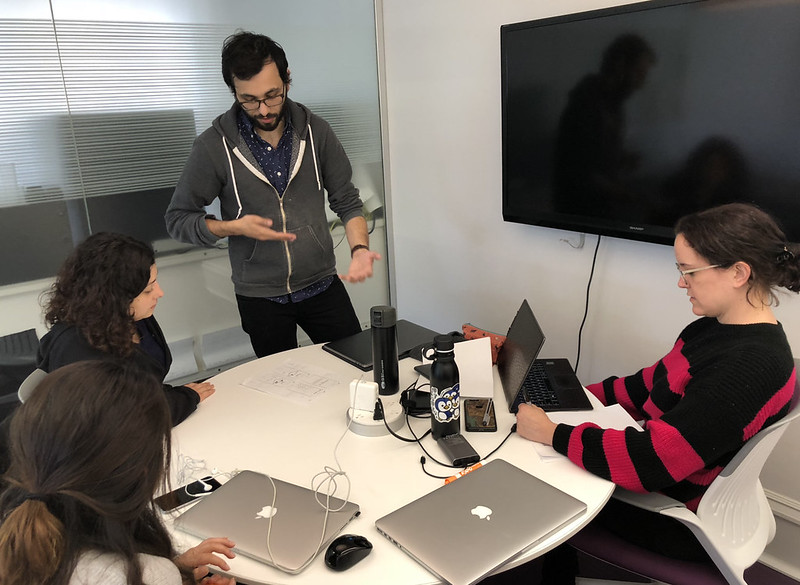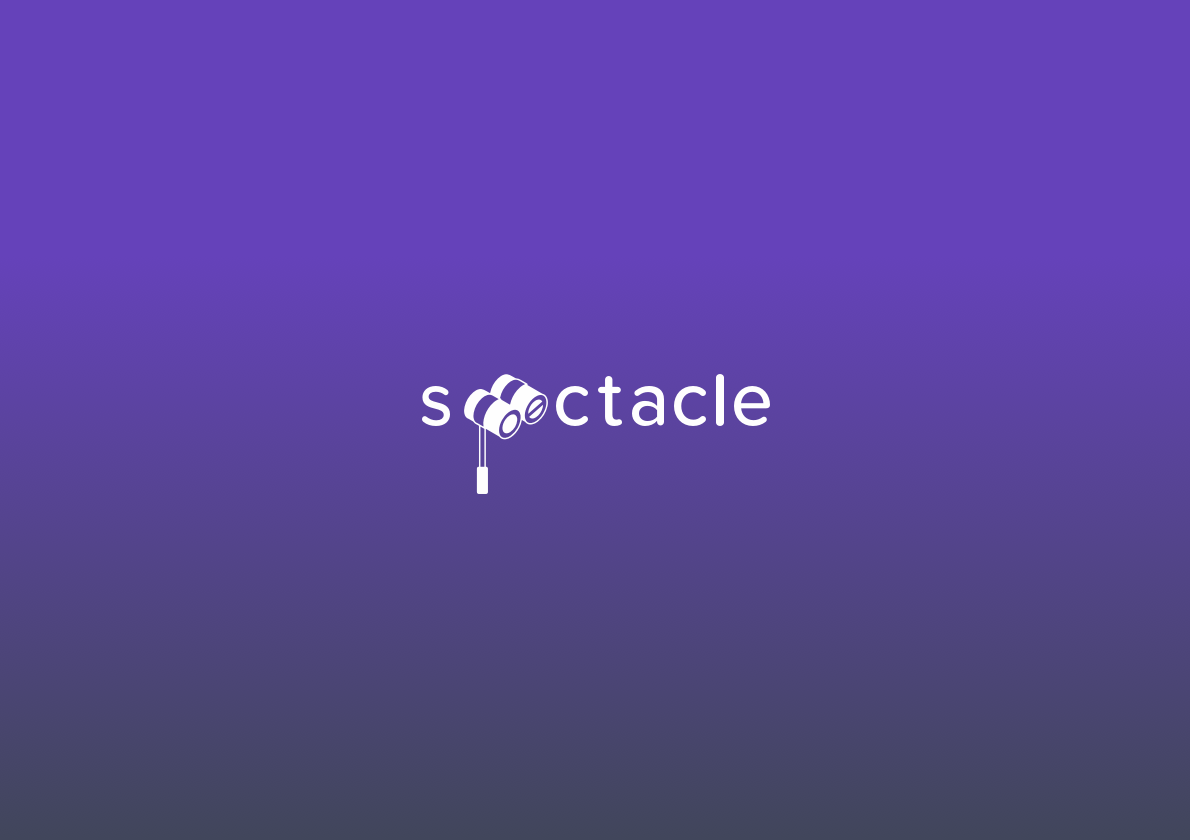An approachable introduction to the cultural arts
Brief
Context
Spring 2018 at Carnegie Mellon University
Team
Lily Kim (visual designer & animator)
Monica Huang (environments & communication designer)
Me (research coordinator, pitch czar, service blueprinter)
Tools & Methods
InDesign
Illustrator
Pen + Paper
Timeline
My Role
♬ How might... ♪
... a music service increase engagement with the cultural arts in a way that is approachable, and fosters personal relevance to audiences?

The Challenge
The cultural arts face financial challenges in many parts of America, and we found that this is also true in Pittsburgh. Not only has there been a steady decline in attendance in recent years, the average patron is in their 40s.
Many people are reluctant to attend due to either false preconceptions about what they’ll experience, or out of hesitation to invest time, money, and coordinative efforts into the unknown.
We sought to help these users take the chance that might lead to a lifelong connection to the arts.

The Outcome
Spectacle is a service that curates personalized package experiences centered around a cultural music event.
It offers dining and entertainment paired with the main event, but the purpose of Spectacle extends beyond convenience–we sought to create a service that would encourage a symbiotic relationship with audiences and cultural arts institutions, so that future programming would be more reflective of the community, thus attracting more new audiences to help sustain them.
Visual Language
We saw the visual and verbal tone of the app as crucial to ensuring new audiences would be open to engaging. Our dialogue often centered around what should be introduced when, with regard to revealing the performance, payment, and ratings. Should any of these three elements be too forceful or unnatural, the service would fail.
For this reason, we started defining the look and feel rather early so that potential users could react.

Blueprint building
Throughout the process, we were encouraged to treat our service blueprint as a living document.

Concept Evaluation
The users we tested with represented extremes among potential Spectacle users; we spoke with one user who seemed very reluctant to try new things, and one who was eager to, but also wanted a sense of luxury and value. Our ideal user sits somewhere between these two: those who might try a new arts experience if coordination were a little easier.

Prototyping
Going through multiple rounds of fidelity helped us to refine the app as we went.


Reflections
What was helpful
Our conversations with people making engagement efforts across different types of institutions was essential to the success of this project. Their range of perspectives allowed us to have a strong idea of what was possible and what was ideal.
What had the most potential
We honestly think that, if set in the right tone and equipped with the right curator (human or algorithmic), this idea would bring people into contact with new art forms.
The main takeaways
This service won’t be for everyone. It’s unrealistic to expect everyone to suddenly enjoy the cultural arts thanks to a service, but by situating our initial touchpoint in festivals where new potential audiences already are, we stand a strong chance of connecting them.
Given more time…
As is often the case with educational projects, there was little time to test. We’d like to try a more robust version of the service with users, and present it to arts organizations!



